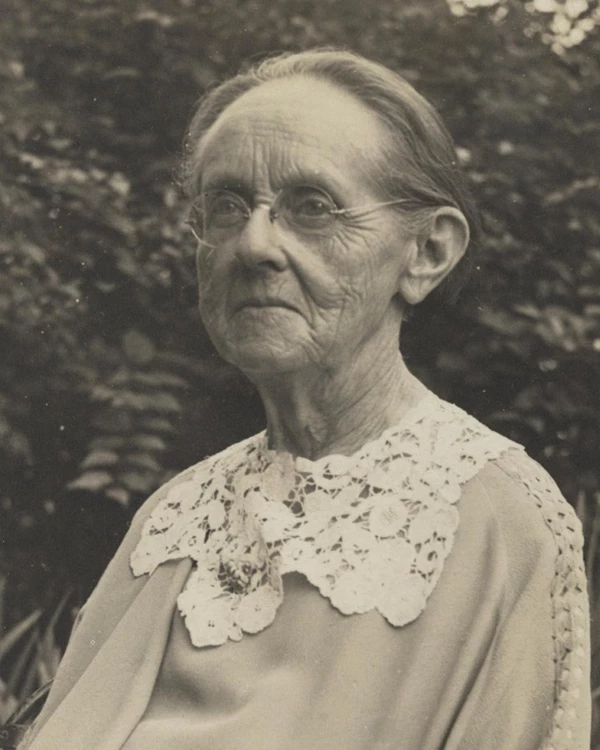Last updated: April 15, 2021
Person
Alice Park

Library of Congress
My religion is humanity—humanitarianism—confident that the present time is all that we are sure of, and [that] our duty, our progress and our usefulness are all here and now—If we think earnestly of the present and try to do all we can right here and now—we are at least sure of immediate results. My religion is boundless—Nothing human is alien to me.
Alice Elizabeth Locke was born in Boston, Massachusetts, on February 2, 1861. Her parents were John G. Locke, a lawyer, and Harriet Brown Pinkham Locke. Alice was related to Quaker abolitionist and feminist Lucretia Mott through her mother's family. After Locke's father died in 1869 and her mother in 1874, Locke was raised by an aunt and uncle. She graduated from the Rhode Island Normal School and taught grammar school for 4 years.
In 1884, at age 23, Locke married Dean W. Park. Due to Dean's work as a mining chemist, the couple resided in rural mining regions of the U.S. and Mexico from 1884 to 1902. They settled in San Francisco in 1902 and moved to Palo Alto in 1906. The Parks had two children, Carl, born in 1895, and Harriet, born in 1897. Both graduated from Stanford University. After her marriage, much of Alice’s work as a writer, political organizer, and librarian was unpaid. A few close friends funded some of her activities. Park was widowed in 1909 when her husband died after a bicycle accident. Alice died on October 17, 1961 in Santa Clara, California.
I am first and last a feminist.
Alice Park's "deepest interest and enthusiasm" was feminism. She possessed a "strong impulse to help all women" achieve emancipation and equality. Park recalled in 1925 that her identification with feminism began at fourteen when she noticed a gender based pay differential among her teachers. Park’s interest in feminism only continued to grow.
In 1877, Park attended her first suffrage convention in Providence, Rhode Island. This was the beginning of Park's long involvement in women's rights. Park served as an officer and board member of the California Equal Suffrage Association. She was also heavily involved with the Literature and Printing Committee of the CESA. Park developed most of the official CESA literature, posters, and consumer novelties for the successful 1911 campaign for woman suffrage in California. A number of historians believe that Park played a critical role in modernizing suffrage messaging across the United States. She pioneered the use of bold type, brief and clear texts, images and maps, and bright color within suffrage messaging. In 1915, Park participated in the Panama-Pacific International Exposition in San Francisco. She spoke at the Woman Suffrage Booth, worked with the American Humane Education Society and advised the International Conference of Women Workers to Promote Permanent Peace.
A committed pacifist, Park opposed the Spanish-American War and the First World War. Park started the Palo Alto branch of the Women's Peace Party. She took part in the Henry Ford Peace Ship Expedition. Park went on to form a local chapter of the American Union Against Militarism, a group that later became the American Civil Liberties Union. After the war ended, Park went on to fight against militarism. She took up the cause of conscientious objectors, who were still incarcerated years after the Armistice.
It is evident that publicity pays!
After a visit to Alcatraz Military Prison in 1919, Park published a pamphlet titled "Dungeons in America." She distributed this to more than 200 editors. This pamphlet exposed the brutal conditions conscientious objectors, like Robert Simmons, were subjected to. Absolutists who refused hard labor, like Simmons, were forced into 12x23 inch “standing cells” for up to eight hours a day. Years later a military official cited the impact of the publicity about the cages. Adjutant General Lutz Wahl in November 1928 stated, “The arrangement of the ‘double cell door’ as a punishment for the military prisoners at Alcatraz, was discontinued shortly after 1920 not because the punishment was believed to be severe, but rather because of the undue attention attracted to it by misrepresentation as to its severity.”
Over the course of her work, Park became a key member of the influential network of socialist-feminist women in California. This network sought to bring activist women together across lines of difference and facilitate coalition building. Park, and her colleagues, fought for women's emancipation. Their goals included: women's suffrage, female unionization, protective labor legislation, mothers' pensions, legal contraception, and the gender integration of political parties and the state. They also championed women's economic independence as central to the feminist project.
Sources:
-
Katz, Sherry J. "Biographical Sketch of Alice Locke Park" included in "Biographical Database of NAWSA Suffragists, 1890-1920"
-
Eichelberger, E. (2011). “Hearts Brimming with Patriotism”: Katherine Edson, Alice Park, and the Politics of War and Peace, 1914–1921
